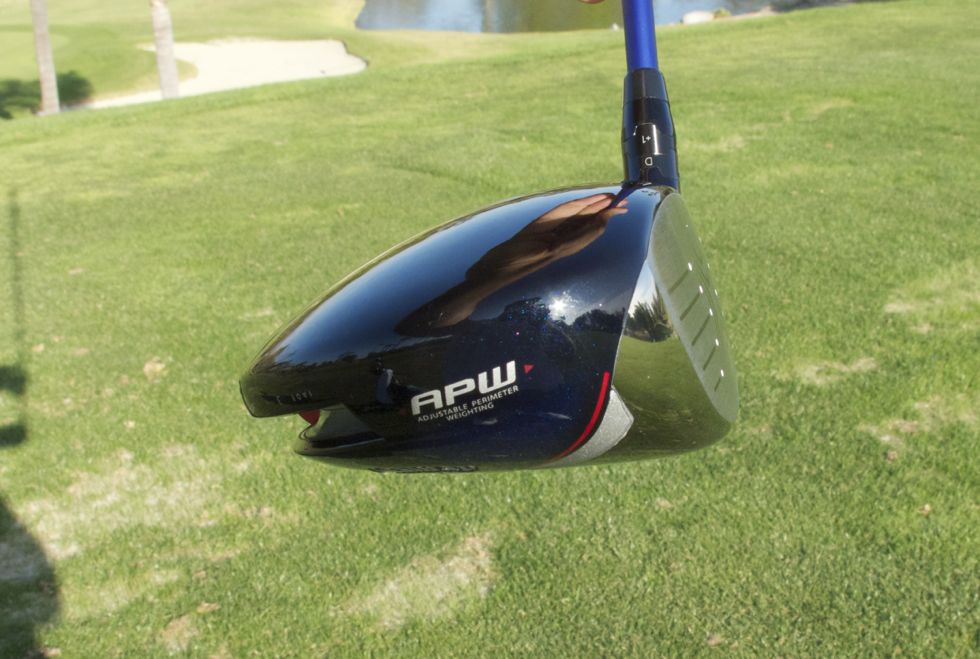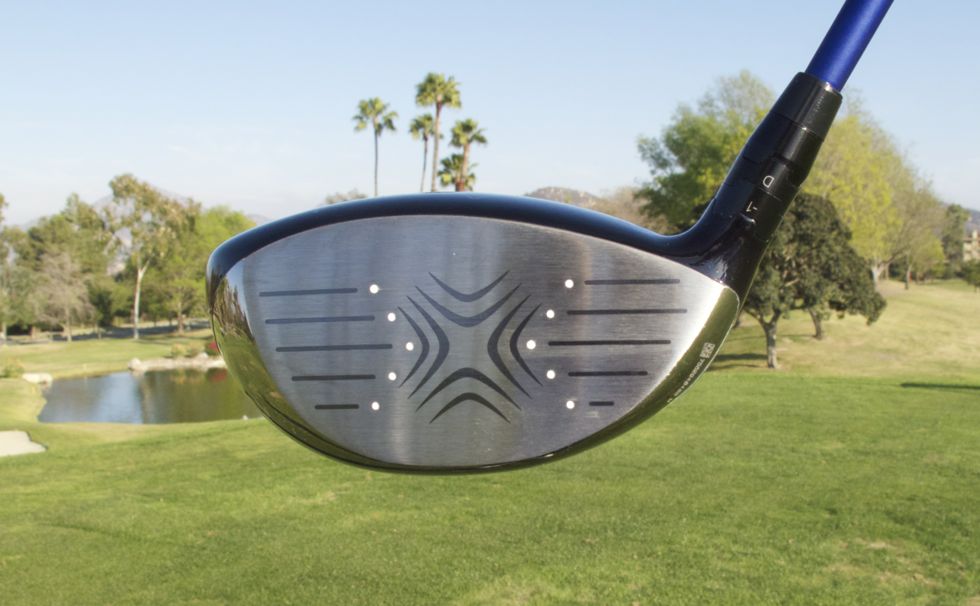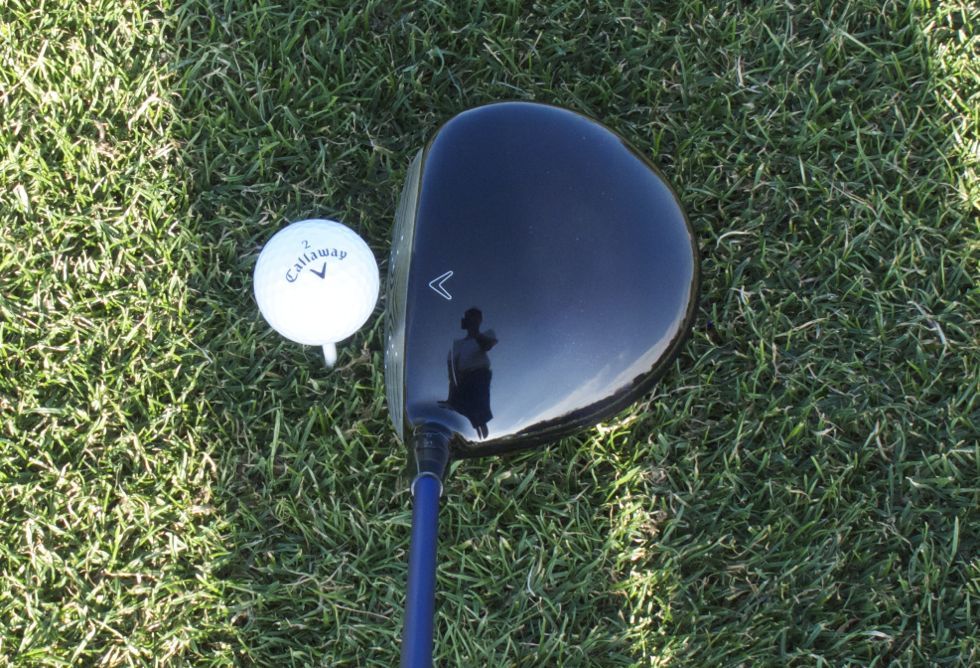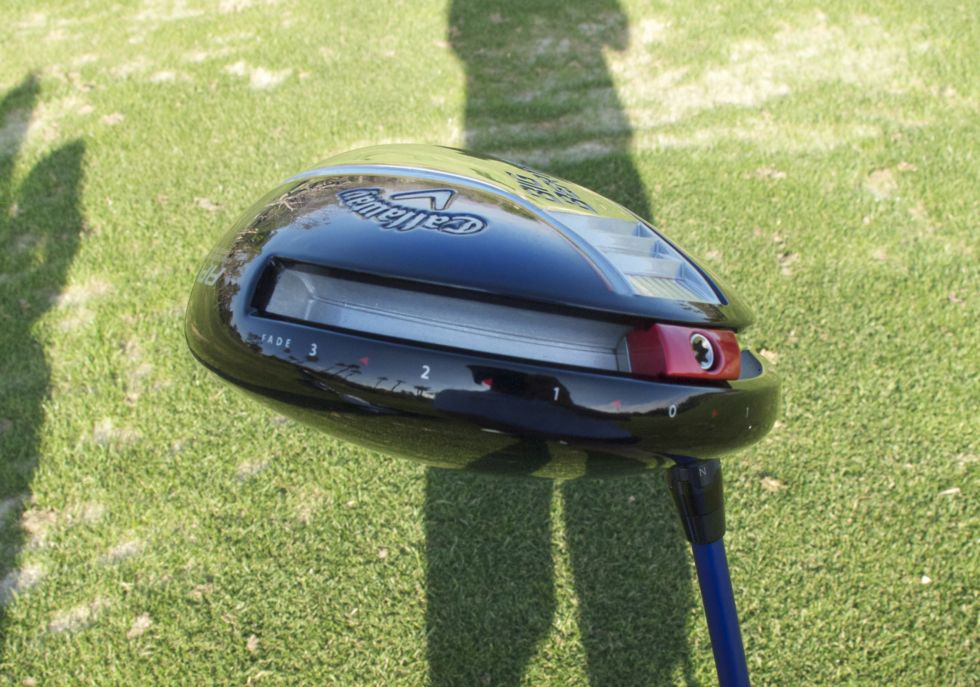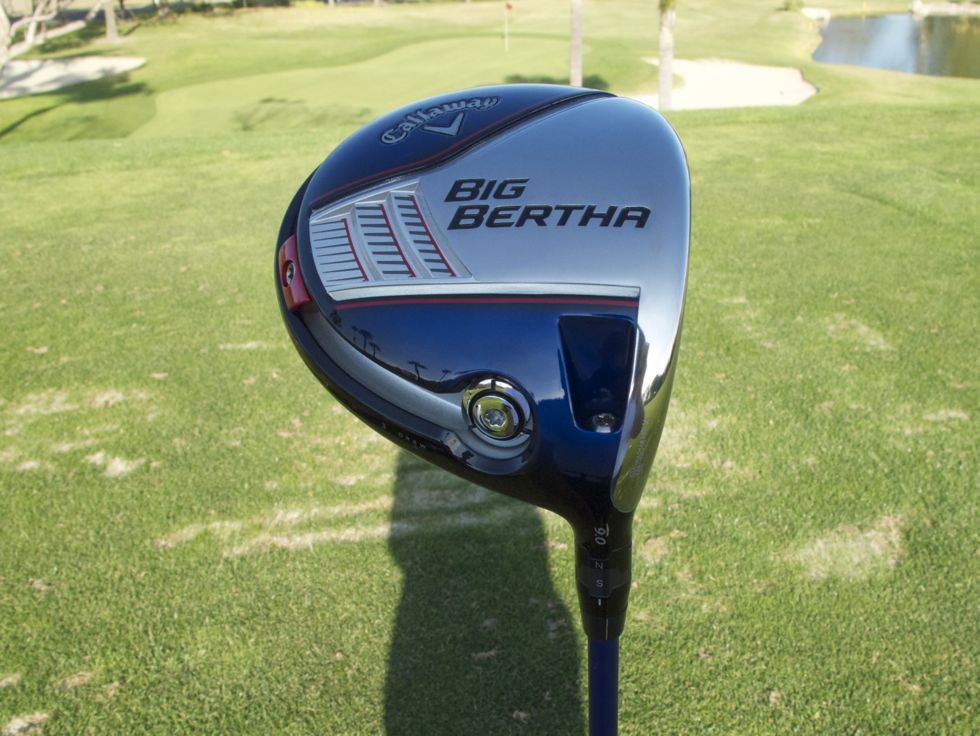 Over the last few years, Callaway has come out with a number of different products with all sorts of different names. From the RAZR Fit and X Hot to Octane and Diablo, it seems that the company has rolled out model after model in search of an identity. However, if there is one product line that defines the company, it is the Big Bertha. When the original version of the Bertha came out, it was all about distance but through the years the company has strayed from the name trying to capture the next great thing. Now it seems that the next great thing is an old one after all, or at least one with an old name. The new version of the Big Berth is bigger and meaner and promises even more distance than ever before.
Over the last few years, Callaway has come out with a number of different products with all sorts of different names. From the RAZR Fit and X Hot to Octane and Diablo, it seems that the company has rolled out model after model in search of an identity. However, if there is one product line that defines the company, it is the Big Bertha. When the original version of the Bertha came out, it was all about distance but through the years the company has strayed from the name trying to capture the next great thing. Now it seems that the next great thing is an old one after all, or at least one with an old name. The new version of the Big Berth is bigger and meaner and promises even more distance than ever before.
Specs
For the purpose of this review, I received the 9° version of the standard Big Bertha (not the Alpha model). Back in January I was able to visit the Ely Callaway Performance Center in Carlsbad, California and was able to hit the club with a number of different shafts. While the Big Bertha normally comes equipped with the Mitusubishi Rayon Fubiki Z shaft, I found that I liked the Diamana S+ shaft best. That was no surprise to me since I had it in my FT Optiforce 440 which performed very well for me. The club also came with a Callaway branded New Decade Multi-Compound grip. While it’s a great grip in the eyes of many, it’s not one that I actually care for and have since replaced it with a wrap style Pure grip.
Design and Technology
The driver is, quite possibly, the club that receives the most attention from any company’s R&D department, and for good reason. After all, the majority of holes are started using it, it’s one of the most costly clubs in the bag, and there are a lot of different approaches that companies can take to produce a great product. Over the last 10 years we’ve seen big advances in driver technology and this driver is full of it.
To start, this club maintains the idea of the Optifit weights, but it is implemented in a slightly different way. In the heel of the club, golfers will still find a removable weight (a 10 gram weight comes installed). However, instead of an opposing weight in the toe, the club features Callaway’s Adjustable Perimeter Weighting (APW) technology. What this is, is a sliding weight along the back of the club and moving the weight towards one side or another will promote a draw or fade by changing the horizontal location of the clubs center of gravity. While some other company’s approach as been to move the clubs center of gravity low and forward in the club, Callaway has the center of gravity low and deep. While the benefits of a forward center of gravity have been touted as of late, there are good reasons to have it further back in the club instead. Low and deep achieves two things, first, the low part contributes to a high launch, while deep increases the club’s MOI (Momement of Inertia). Basically what that means is that the club is more stable, even on off center hits, and doesn’t lose as much energy on off-center strikes. In other words, it’s forgiving.
In addition to the new implementation of sliding weights, the company has continued use of their new advanced adjustable hosel, which they debuted on the FT Optiforce drivers. This is, in my opinion, the best of the adjustable hosels for a number of reasons. First, I think that it gives the greatest versatility. While some companies (Nike, Cobra) allow for a few more degrees in loft adjustability there aren’t any settings to change directional bias. With the Callaway hosel you get a total of four different possible lofts; you can obviously use the stated loft of the club, go down one degree, or go up one or two degrees; meaning that my 9° model can play at 8, 9, 10, or 11 degrees. On top of that, any one of those lofts can be used in a neutral or a draw setting, where the draw setting gives a more upright lie angle. Another thing that I love about the hosel is no matter the setting you choose the shaft stays in the same orientation; I like this because I prefer the shaft graphics to be down, but on some drivers, the right setting puts the graphics to the side or on top. Obviously, this isn’t a huge thing, but it’s something I appreciate about the hosel. Probably the only one that comes close to my mind to Callaway’s adjustable hosel is Titelist’s, and in fact I’ve seen some call Callaway’s newest version a “Titleist” hosel as it is nearly identical (except for the shaft orientation thing). However, with the Titleist hosel you get settings like A1 or D3, who knows what that means; that’s not the case on the Callaway version as it is clearly marked. No charts needed.
To increase ball speeds across the face of the driver, the company has implemented their Hyper Speed Face technology. The new face of the driver is, of course, lighter than before, but also stronger and hotter, allowing for increased ball speed across the face. The Big Bertha also features a multi material designed as the crown of the club is made from a forged composite. This allows for a lighter and thinner crown, allowing the engineers to get more of the clubs weight low and deep.
Esthetics
From a looks perspective, this club is a bit of a departure from Callaway’s recent offerings. The X Hot series has seen the use of a matte gray crown while the RAZR Fit Xtreme line, which the Big Bertha replaces, featured a glossy black crown. Both of those clubs also featured black PVD faces. With the Big Bertha, the crown remains glossy but is a deep blue instead of black. The club also sports a silver face again. Personally, I’d have preferred the black face, but the silver still looks sleek and from a durability stand point holds up much better than a black face. On the face of the club you’ll find a couple of grooves with a stylized “X” marking the sweet spot. The crown of the club has the Callaway chevron as an alignment aid. My favorite drivers in the past have been those void of any mark on the top, but the one on the Big Bertha is small and simple enough to be a non issue for me.
On the bottom of the club, the deep blue continues on the edges, and is predominantly silver in the center with the words “Big Bertha”. The club is accented by some red lines and the red adjustable perimeter weight. One issue that I’ve found with the club is that the paint around the hosel adjustment screw tends to chip away. I’ve noticed this not only on my club but also demo clubs at a few different golf shops. It seems that the minimal amount of contact it has with the wrench when making adjustments is enough to cause damage. However, it’s purely a cosmetic issue and doesn’t effect the clubs performance one bit.
My last handful of drivers have all been models less than 460cc limit, so I wasn’t sure how I’d like moving to a bigger club. While obviously a bit larger than the other’s I’ve played, I think it looks good. The lines and curves of the club are smooth and the ball is framed nicely at address. While I still would rather a darker face, the silver of this one contrasts nicely against the crown. However. for some reason, I tend to set up with the club face open with this club, and that is something I have to remind myself about from time to time on the course.
For what it’s worth, I also am a fan of the head cover that comes with the ball. It is mostly blue with white and red accents and is the typical sock style head cover. It’s easy enough to get on and off but doesn’t fall off while walking or riding in the cart.
Performance
One of the first drivers I ever used was an original Big Bertha when I was in high school, and I very much liked that club. Much the same as the original, I like the performance of this club quite a bit as well. From a distance stand point, this club gives me all that I could expect at my swing speed. Unlike a lot of golfers, I found that I actually struggle to spin the ball enough, but at either the 9° or 10° settings, my numbers were pretty good with the Big Bertha. My previous couple of drivers actually fit me pretty well, and this one continues that trend. One thing that we talked about while at the center in Carlsbad was getting the right trajectory and making sure that the the ball gets to its apex and stays there for a bit before descending back to the ground. In the past, I’d hit shots that seemingly never made it to their apex as well as also hitting line drive type of drives. Those drives are now few and far between for me as I’m seeing a much higher launch and more carry than before.
Over the past month or so, I’ve experimented with changing the loft of the club to see how it would change things as well as adjusting the perimeter weight. I find that at either the 9 or 10 degree setting I hit the ball pretty well, but at 8, it is just too low and at 11 it seems to just goes up and right back down. On a typical day I’ll set it at 10° and when it’s a little windy I’ll bump it down to 9°. The permitter weight works by changing the horizontal center of gravity of the club. As most golfers know, hitting the ball out towards the toe tends to hook the ball, while balls hit on the heel will cut it. With the weight moved towards the heel, hitting the center of the face effectively works as if you hit it on the toe. The opposite is true when the weight is moved towards the toe, as center hits tend to react more like heel shots. Moving the weight from one way to the other, it is pretty obvious that there is a difference. For me, I have mine set pretty close to the middle, with just a tiny bit of draw bias.
I suppose you would say that the two components to being a good driver are hitting it long and straight, and as I mentioned above, I find this one to be as long as any I’ve hit before. This driver is also pretty straight for me, although not the best that I’ve used. I played the FT Optiforce for a while and found myself consistently in the fairway with that club. I find that with the Big Bertha my shot dispersion is just a little bit wider and I play from the rough a little more than I did previously. That being said, it’s not a whole lot different, and between the two, I’d still take the Big Bertha. The reason for that is the forgiveness of the club. While the Optiforce put me in the fairway with a touch more regularity, I found that if I missed the center I’d be significantly shorter than on good hits. Missing the center on the Big Bertha still tends to give me most of the distance of a good hit. If I had to choose between 220 in the center or 245 just off the fairway, I’d choose the latter at least 9 of 10 times.
Sound is also a key issue to look at when choosing a driver, particularly because so much of what we hear with a club is interpreted as feel. Like the last handful of Callaway drivers I’ve played, this one provides a solid thwack at impact. I’m not a huge fan of drivers that seem overly loud or tinny, and this is neither of those. I wouldn’t go so far as to say that the driver sounds muted but it isn’t deafening either.
Conclusion
With the Big Bertha, Callaway has returned to the product line that put them on the map. The club promises to be long and accurate, and I find it to be both. With the amount of adjustably that this club offers (four degrees in loft, fade and draw bias) it is likely that there is a setting that will work well for you. The only thing that was somewhat of an issue for me was the minor paint chipping around the screw on the clubs sole, but that is a purely cosmetic issue.
The true test for me is whether or not a club will stay in the bag after I get another one to review. While I’m not sure what will come my way next, I know that it’s going to have to be something really special to replace the Big Bertha. At this point, it gives me all that I’m looking for and because of that, it has earned it’s spot in my bag.


